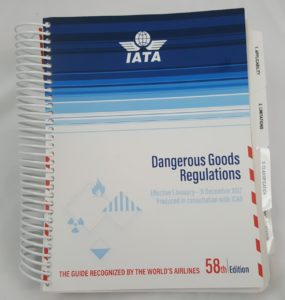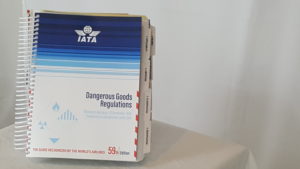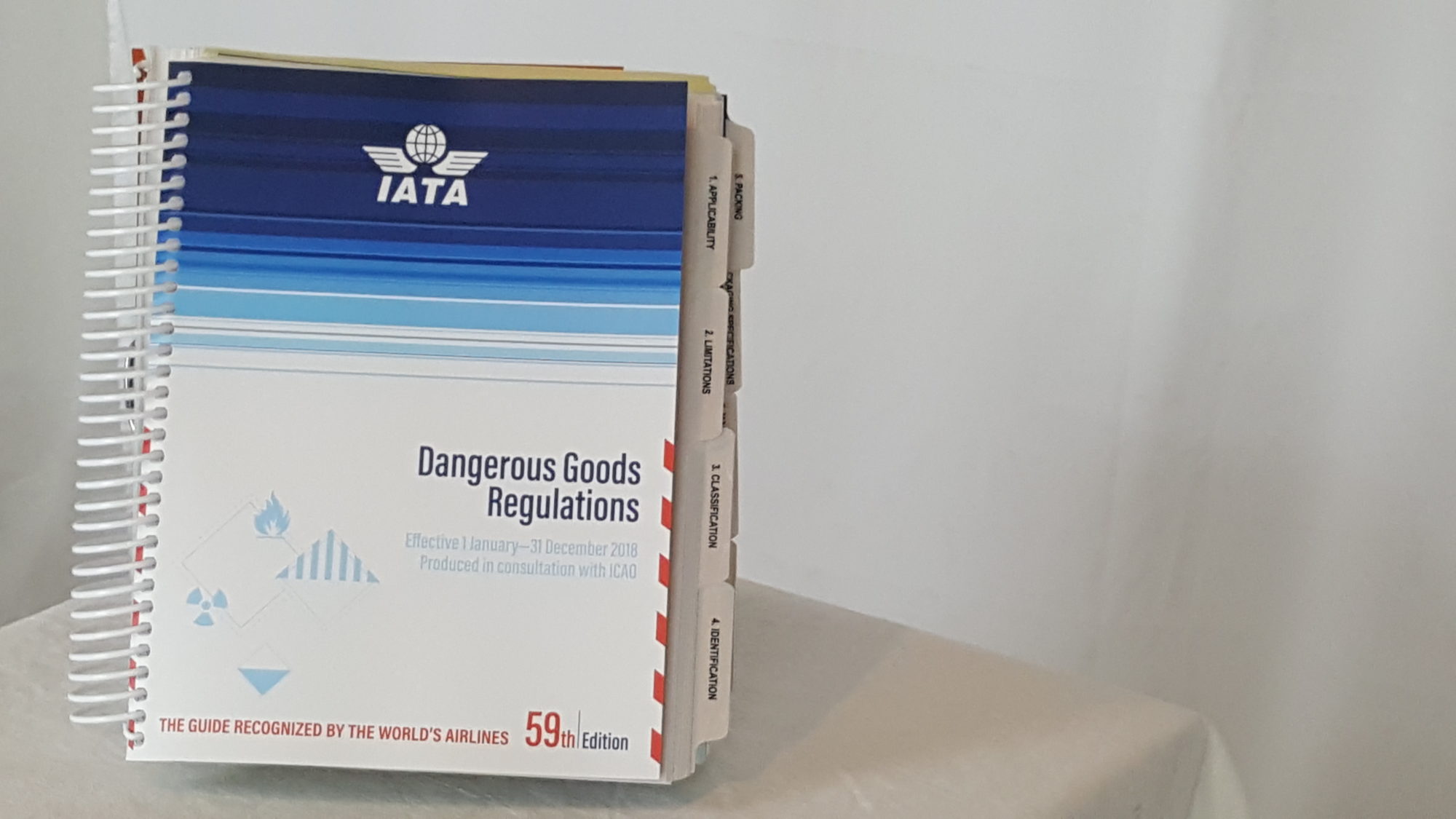The International Air Transport Association (IATA) publishes a new edition of its Dangerous Goods Regulations for each calendar year. In effect for the remainder of calendar year 2017 is the 58th edition. Beginning January 1, 2018 all transport of dangerous goods subject to IATA’s Dangerous Goods Regulations must be in compliance with the 59th edition. The purpose of this article is to summarize the significant changes in store for 2018 in the 59th edition.
What follows is only my summary of the full document issued by IATA (Significant Changes and Amendments to the 59th Edition – 2018). And, IATA includes this disclaimer in their document:
The following list is intended to assist the user to identify the main changes introduced in this edition and must not be considered an exhaustive listing.
So, there’s no substitute for doing the necessary research into the regulations to ensure your transport of dangerous goods by air complies with the IATA Dangerous Goods Regulations. That being said, I hope my summary below will assist you in identifying where in the 59th edition you should focus your research – if at all.
Section 2 – Limitations:
Subsection 2.3 – Dangerous Goods Carried by Passengers or Crew
2.3.5.9 – Now includes limitations – with some exceptions – on the number of portable electronic devices (PED) and the number of spare batteries for the PED allowed to be carried by passengers or crew.
Subsection 2.8 – State and Operator Variations
2.8.3 – Several additions, deletions, and amendments to operator variations.
Interesting note! There is no indication of changes to state variations at 2.8.1. |
Section 3 – Classification:
3.9.2 – This subsection has been restructured to bring in all substances and articles assigned to Class 9 Miscellaneous with their respective UN numbers and proper shipping names.
Section 4 – Identification:
Subsection 4.4 – Special Provisions
A70 – Has been revised to require the shipper to provide documentation stating that a flushing and purging procedure for flammable liquid powered engines has been followed.
A203 – Identifies that vehicles powered by an engine using both a flammable liquid and flammable gas must be assigned to the entry Vehicle, flammable gas powered.
Section 5 – Packing:
5.0.1.5.1 – Has been revised to include new restrictions for some lithium batteries (UN3090 and UN3480) placed into an overpack with most Class 1; and Division 2.1, Class 3, Division 4.1, or Division 5.1.
5.0.2.11 – A note has been added: some lithium batteries (UN3090 and UN3480) are not permitted in the same outer packaging with most Class 1; and Division 2.1, Class 3, Division 4.1, or Division 5.1.
Packing Instructions:
PI 951 – Has been revised to require a vehicle powered by an engine using both flammable gas and flammable liquid fuels to meet relevant requirements of PI 950.
PI Y960 – A note has been added to reinforce that dangerous goods in Packing Group I are not permitted.
PI 965 and PI 968 – Text has been added to identify the restrictions on packing some lithium batteries (UN3480 and UN3090) in the same outer packaging with most Class 1; and Division 2.1, Class 3, Division 4.1, or Division 5.1. Restrictions are also identified on placing packages of the same lithium batteries into an overpack with most Class 1; and Division 2.1, Class 3, Division 4.1, or Division 5.1.
Section 7 – Marking and Labeling:
7.1.5.5.2 – Text has been added recommending that the UN number(s) on the lithium battery mark be of a minimum size.


Section 9 – Handling:
9.3.2 – Has been revised to introduce segregation requirements for some lithium batteries (UN3480 and UN3090) and most Class 1; and Division 2.1, Class 3, Division 4.1, or Division 5.1.
Appendix B – New Cargo IMP codes have been added for UN3090, Section IA and IB of PI 968-RBM and UN3480, Section IA and IB of PI 954-RBI.
Appendix D – Contact details for competent authorities have been updated.
Appendix E – Changes have been made to the list of UN Specification Packaging Suppliers and the Package Testing Facilities.
Appendix F – Changes have been made to the list of Sales Agents, IATA Accredited Training Schools, and IATA Authorized Training Centers.
Appendix I – This new appendix was added to describe the changes that will come into effect as of January 1, 2019 (i.e. the 60th edition). These changes include:
- Replacement of most instances of the word “risk” by the word “hazard”.
- Significant changes to the provisions for the classification of corrosive substances.
- A new requirement for manufacturers and subsequent distributors of lithium cells or batteries to make available a summary of the UN 38.3 tests.
- New provisions for the classification of articles containing dangerous goods, n.o.s.
- A number of new and modified special provisions.
- Removal of the lithium battery handling label.
Contact me with any questions you may have about the transportation of hazardous materials by air, highway, vessel, or rail International and Domestic Daniels Training Services, Inc. 815.821.1550 |
Step 1: Purchase the 59 the edition of the IATA Dangerous Goods Regulations
Step 2: Review the regulations to determine if their were any changes that effect your compliance.
Step 3: Contact me for in-depth site-specific Onsite Training.

